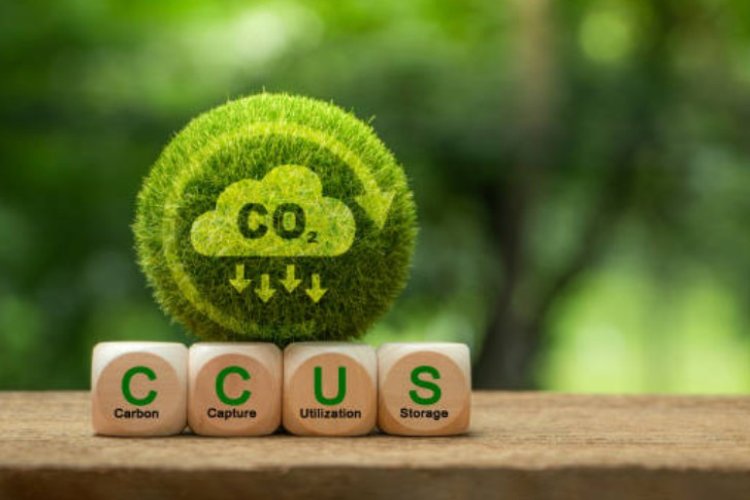India’s energy transition is among the government’s most pressing policy priorities. The country is the world’s third-largest consumer of energy, yet coal continues to dominate—accounting for 70% of electricity generation and more than half of the overall energy mix. Ambitious renewable targets have been set, but coal remains the weak link in the shift to clean power.
To address this, the government is preparing a national carbon capture, utilisation and storage (CCUS) initiative, offering financial support of 50% to full project funding in some cases. The plan is to embed CCUS in coal-fired power generation and coal gasification projects, thereby reducing the environmental cost of continued coal use. CCUS works by capturing carbon dioxide from industrial processes or at the point of emission and then storing it underground.
READ | Data centre future hinges on policy stability, not tax breaks
Beyond technical risk, CCUS raises concerns about how local communities will be affected. Global environmental justice literature warns that CCS/CCUS projects risk exacerbating pollution burdens in already overburdened or vulnerable regions if siting, health impact, and land use are not managed with transparency and strong safeguards. This includes needing public consultation, securing “free, prior, and informed consent”, ensuring community health monitoring, and establishing strict liability regimes in case of leaks or contamination. Without those, public trust may falter, and regulatory backlash may delay deployment.
The International Energy Agency (IEA) calls CCUS indispensable for net-zero pathways, especially in hard-to-abate sectors like cement, steel, and chemicals. For India, the technology could ease reliance on imported natural gas by supporting coal-to-gas projects. If deployed effectively, CCUS could cut gas imports nearly by half, strengthening energy security while renewables scale up.
Costs and risks
Still, CCUS is no silver bullet. Globally, projects have faced high costs, technical obstacles, and doubts over the long-term safety of underground storage. The economics are daunting: experts estimate the cost of capturing one tonne of carbon dioxide at $40–120, depending on the sector. For coal-fired plants in India, the additional burden could raise tariffs sharply unless government subsidies cover much of the expense.
Beyond economics, storage risks loom large. Leakage could undo climate gains, damage ecosystems, and erode public trust. Without robust regulation, CCUS could add more uncertainty than relief.
India’s coal production crossed one billion tonnes for the first time in March 2025, underlining the sector’s centrality to energy security. Policymakers expect coal to remain dominant at least until 2047, when India hopes to mark its centenary as a developed nation. The real challenge, then, is not abandoning coal but using it more sustainably without compromising climate commitments.
Any CCUS deployment at scale will need far more than government grants or subsidies. According to an OECD handbook on CCUS policies and business models, successful frameworks couple policy certainty (tax incentives, carbon pricing, guaranteed off-take) with private capital mobilisation via risk-sharing mechanisms, loan guarantees, and public-private partnerships.
Reports such as “Unlocking Private Capital for Carbon Capture and Storage in Industry and Power” emphasise that projects become more bankable when cost-recovery is assured through regulated tariffs or long-term contracts—with clarity on liability, transport, storage risks, and carbon credit regimes.
Global lessons
International experience offers both guidance and warning. Norway’s Sleipner project, launched in 1996, has successfully stored carbon dioxide beneath the North Sea, underpinned by strict monitoring and regulation. The US has expanded CCUS rapidly through the Inflation Reduction Act, which raised tax credits to $85 per tonne of stored carbon.
By contrast, Canada’s Boundary Dam project has struggled with costs and technical snags, while Australia’s pilot projects drew criticism for poor oversight and unfulfilled promises. The lesson is that success depends as much on regulatory design and institutional capacity as on technology itself.
Internationally, the trend is shifting toward CCUS hubs—clusters where capture, transport, and storage infrastructure is shared across multiple industries—which deliver cost efficiencies in scale, infrastructure, pipeline networks, and storage facilities. According to the Global CCS Institute and others, investment in CCUS is growing rapidly: in 2022, global investment almost tripled to USD 6.4 billion, with planned capacity more than doubling. For India, planning CCUS hubs in coal regions, industrial corridors or near large emitters could lower per-unit costs and foster institutional efficiencies.
India’s path ahead
For India, the risks are amplified by weak institutional capacity. Unlike Norway or the US, it lacks a mature framework for geological monitoring, liability transfer, and long-term regulatory oversight. Building this institutional scaffolding will be as important as building physical projects.
CCUS should therefore be seen as a transitional tool, not an excuse to expand coal indefinitely. Its value lies in buying time while renewables and green hydrogen ecosystems mature. Integrating CCUS with gasification, hydrogen production, and underground coal mining could also reduce pressure on new greenfield projects, limiting environmental disruption.
India’s coal problem is not scarcity but sustainability. With the world’s fifth-largest reserves, it cannot phase out coal overnight. CCUS offers a bridge, but only if deployed within a wider decarbonisation strategy anchored in transparency, public trust, and robust safeguards. Treated as a standalone fix, it risks becoming an expensive distraction that delays the structural transformation India urgently needs.

